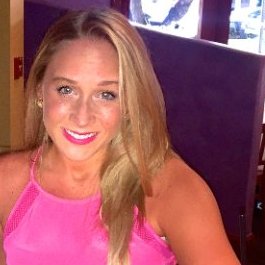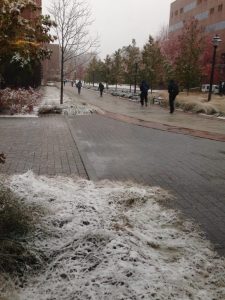Across the country, college’s and universities are seeing a dramatic increase in the number of students seeking help for mental health issues. From mood disorders to thought disorders, college is the perfect storm for many mental health issues to come boiling to the surface and many students are left to figure out how to cope with them.

Morgan Madore, a psychiatric registered nurse at the Hospital of Central Connecticut in New Britain, says that college students are the most prone to experiencing mood and thought disorders such as anxiety and depression.
“I do think with college students trying to put so much on their plate, it is no wonder they have a lot of depression, lot of anxiety,” Madore said.
There are three main anxiety disorders that student’s face on a daily basis.
“Generalized anxiety, panic disorder, and social anxiety is what we mainly see with college students,” Madore said.
Generalized Anxiety Disorder
One form of anxiety that many students is called generalized anxiety, which affects 40 million adults, 75% of which experience their first anxiety attack at age 22.
“Generalized anxiety is what most of the population has and it’s when people are worried about unrealistic situtations that could happen in their daily lives. For students, this is common because they already have so much to worry about so they might have anxiety over failing a class, failing out of school, not getting a job,” Madore said.
The symptoms of generalized anxiety include irritability, difficulty concentrating, msucle tension, feeling on edge, restlesness, fatique, and trouble sleeping.
Social Anxiety Disorder
People who have social anxiety disorder feel scared, embarrased, judged and rejected in social situations.
The symptoms of social anxiety disorder include:
- Very anxious about being with other people.
- Self-conscious in front of other people.
- Afraid that other people will judge them.
- Worrying for days or weeks before a public event.
- Staying away from public places.
- Having a hard time making and keeping friends.
- Sweating or trembling around other people.
- Feeling nauseous or sick to your stomach in public.
“Social anxiety is especially hard for college students because college is all about socializing so this can impact other areas of a student’s mental health,” Madore said.
Panic Disorder
People with panic disorder experience panic attacks where they have a sudden and intense fear of something which leads to the heart pounding, sweating, shortness of breath, and the feeling of being trapped.
The symptoms include sudden attacks of fear, feeling out of control, worried about the next attack, and avoidance of places where an attack has already happened.
“Some kids experience panic attacks while they are in class which hinders their academic performance and make them fear going to that class all together,” Madore said.
In a 2015 National College Health Assessment survey conducted by the American College Health Association, 21.9% of students said that within a year, anxiety affected their academic performance. They recieved low grades on exams or projects, getting an incomplete in a course, or dropping a course entirely.
Madore attributes an irregular sleep and eating patterns to the increase in student’s dealing with these disorders. “How can student’s take care of themselves and properly cope with what they are feeling when they are doing so much and don’t even have time to properly eat or sleep,” Madore said.
College students should be getting around eight hours of sleep a night, but they only get around six to seven hours a night. “When student’s are up at night and can’t fall asleep, their minds race with a million different thoughts that increase anxiety,” Madore said.
To cope with this, Madore suggests students priotize their time efficiently so they do not feel overwhelmed.
“If you have a schedule that you follow with set tasks that need to be done, when they need to be done by and when you can complete them, it makes it easier to deal with a busy day. This way, you won’t feel overwhelmed and you can get a good night’s sleep and wake up feeling better,” Madore said.













